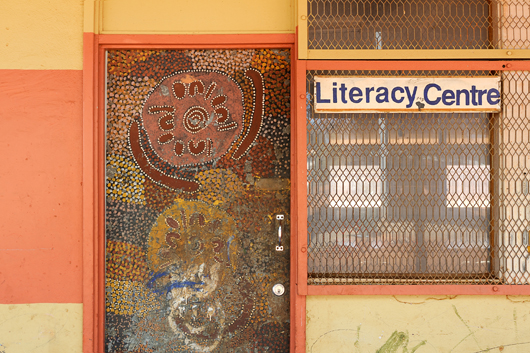A.bc
In Australia, sulle tracce di Chatwin 20 anni dopo Le Vie dei Canti
Palazzo delle Esposizioni, Roma
A.bc
In Australia, in Chatwin's footsteps 20 years after The Songlines Palazzo
Delle Esposizioni, Rome


In
questo villaggio nel deserto occidentale, Papunya - un insediamento aborigeno
creato dal governo trasferendo con la forza gruppi etnici diversi - è
nata l’arte aborigena. Nel 1971 un giovane insegnante bianco della
scuola locale, Geoffrey Bardon, vedendo gli splendidi disegni sulla terra
e sul corpo ispirati alla mitologia della Creazione realizzati in occasione
delle cerimonie tribali, convinse alcuni suoi allievi a riprodurli su
superfici più durevoli. Sulle pareti o le porte della scuola, prima,
su tela poi. Anche gli anziani si misero a dipingere e così Papunya
divenne il primo centro di produzione d’arte aborigena. Nella scuola
il murale originario è stato ricoperto nel tempo da altri dipinti,
ma due porte con i dipinti dell’epoca, un po’ scrostati, resistono.
È quello l’inizio dell’arte aborigena, millenaria e
non ancora quarantenne
In
this village in the western desert, Papunya – an Aboriginal settlement
created by the government by forcing different ethnic groups together
– Aboriginal art was born. In 1971 a young white teacher from the
local school, Geoffrey Bardon, saw the beautiful ground and body paintings
made on the occasion of tribal cerimonies, ispired by the the creation
mythology, and convinced some of his pupils to reproduce the drawings
on more durable surfaces. At first on the school walls and doors, then
on canvas. The village elders too started to paint and so Papunya became
the first centre of production of Aboriginal art. In the school the original
mural has been covered up by other paintings, but two doors have old paintings
on them that can still be made out. That is the beginning of Aboriginal
art, thousands of years old and not yet in its forties